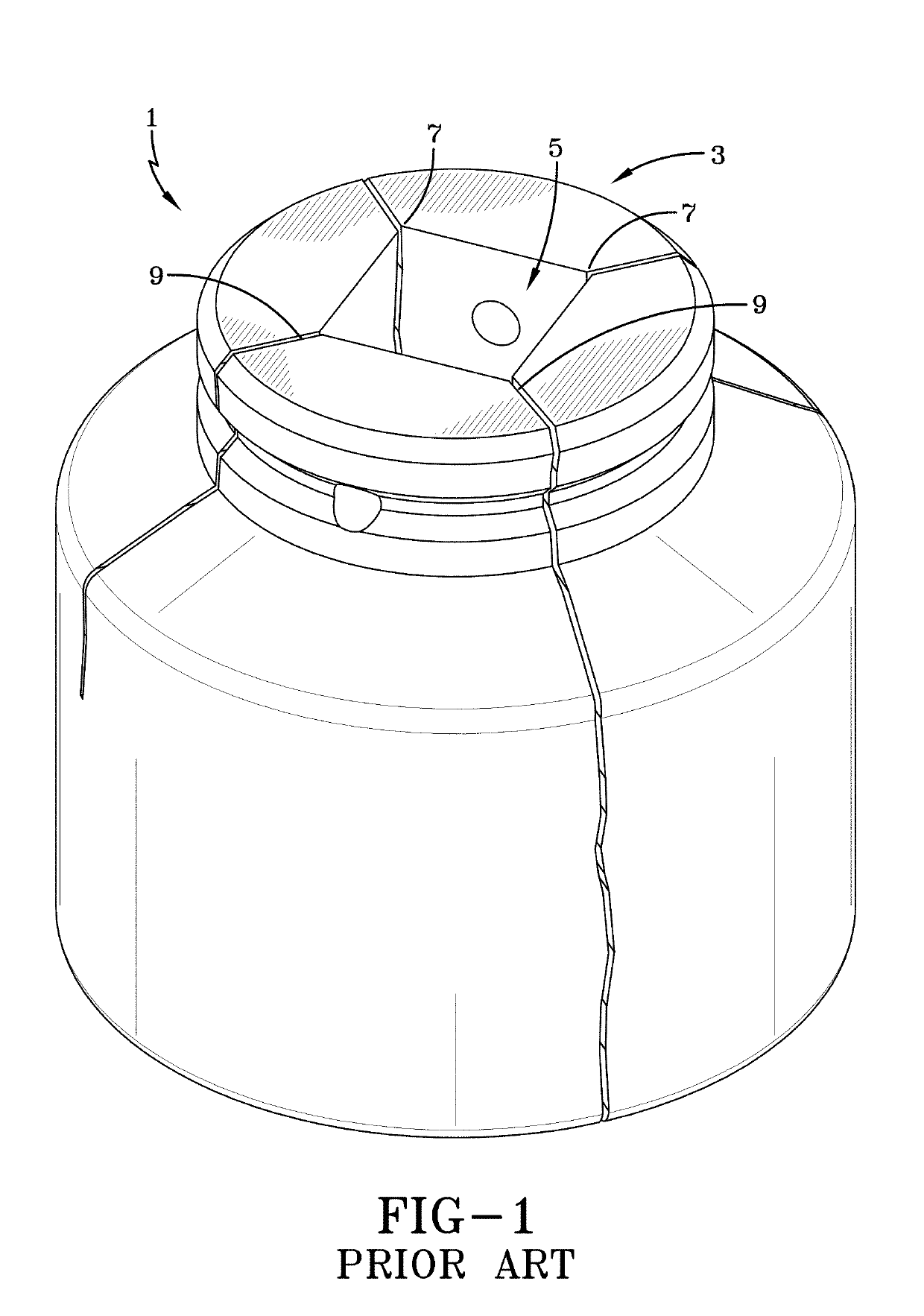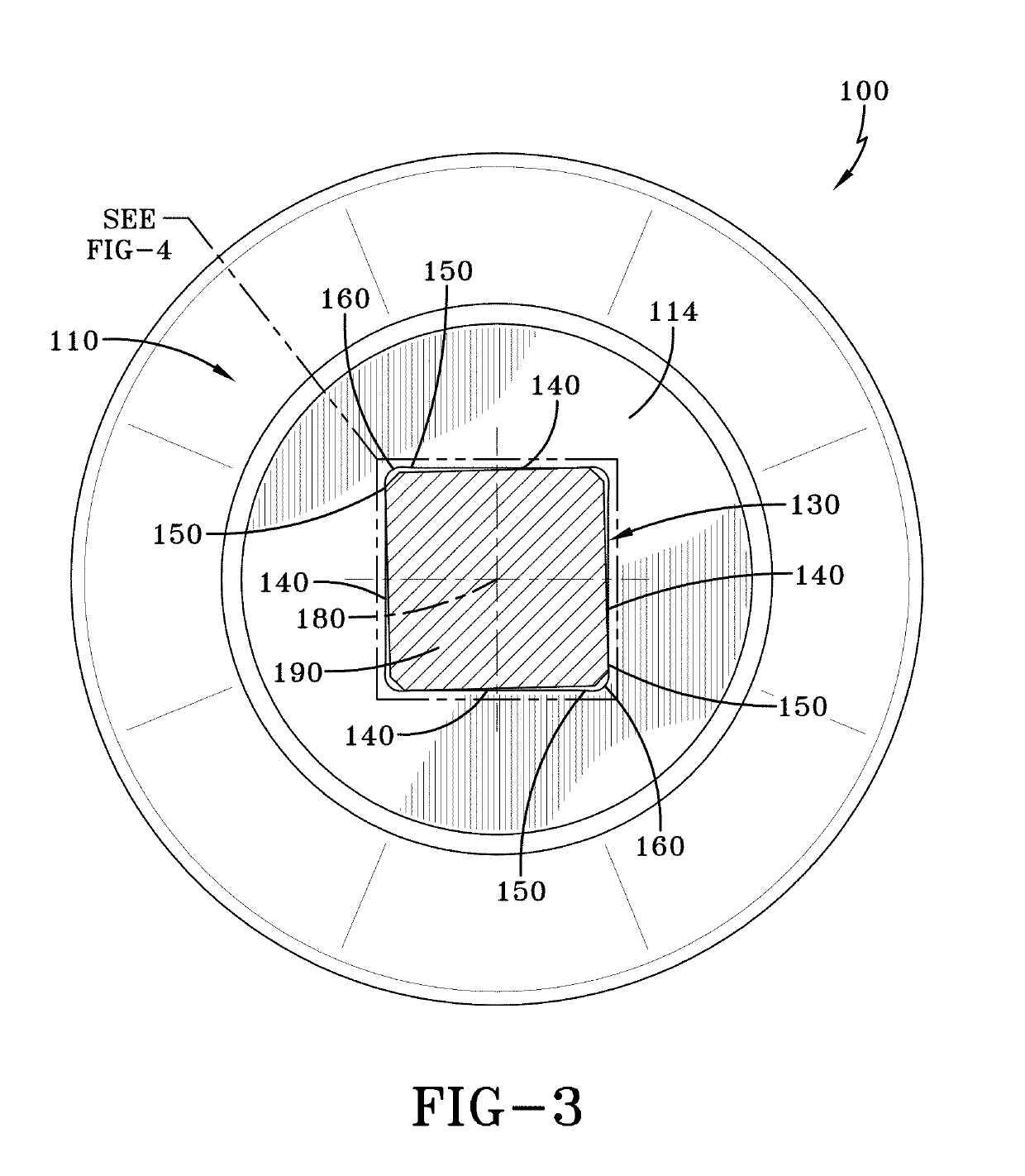Socket with four point drive
a four-point drive, socket technology, applied in the field of sockets, can solve the problems of more failures of sockets at the socket end, increased demands on sockets that are required to torque these fasteners, and failure of sockets, so as to reduce stress concentration, minimize the likelihood of failure, and improve the effect of li
- Summary
- Abstract
- Description
- Claims
- Application Information
AI Technical Summary
Benefits of technology
Problems solved by technology
Method used
Image
Examples
Embodiment Construction
[0035]As explained in the background of the invention, the inside corners in the drive end opening of sockets have heretofore been sharp corners which results in stress risers at those corners. When high torque loads are applied to the drive end of a socket, the stress concentrated at these inner corners may exceed the yield strength or tensile strength of the socket material leading to failure, which can include plastic deformation or fracture. A schematic diagram of a prior art spline socket 1 illustrating fractures 9 at the sharp inside corners 7 of a drive end opening 5 are depicted in FIG. 1. These types of fractures 9 at the drive end 3 of prior art sockets are well known, particularly with respect to spline sockets that experience enhanced loading due to the particular distribution of forces in a spline socket torque application.
[0036]The present invention is directed toward improving the opening in the drive end of sockets for preventing failure of the socket during a torque...
PUM
 Login to View More
Login to View More Abstract
Description
Claims
Application Information
 Login to View More
Login to View More - R&D
- Intellectual Property
- Life Sciences
- Materials
- Tech Scout
- Unparalleled Data Quality
- Higher Quality Content
- 60% Fewer Hallucinations
Browse by: Latest US Patents, China's latest patents, Technical Efficacy Thesaurus, Application Domain, Technology Topic, Popular Technical Reports.
© 2025 PatSnap. All rights reserved.Legal|Privacy policy|Modern Slavery Act Transparency Statement|Sitemap|About US| Contact US: help@patsnap.com



